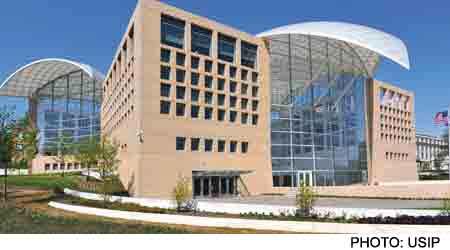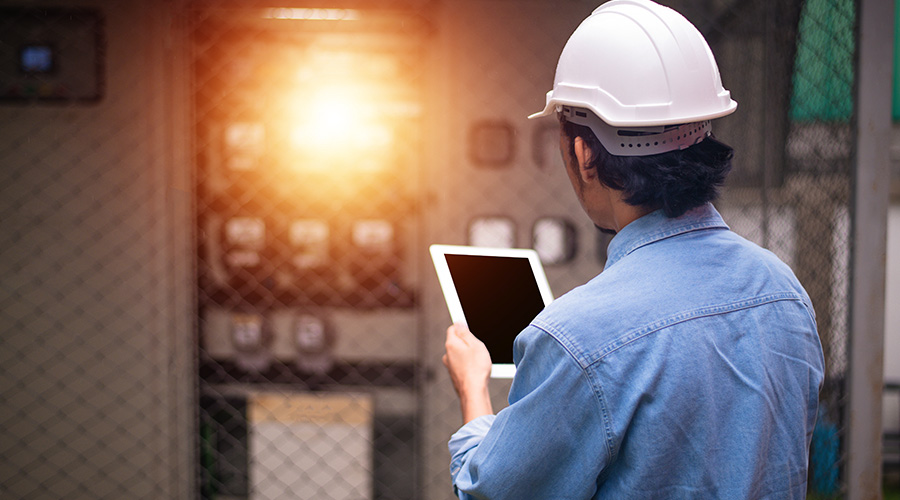Data Plays Important Role at U.S. Institute of Peace Building
Last of a 3-part article describing how 3 complex facilities are putting Building Internet of Things to work
Data is central to the Building Internet of Things, and at the striking four-year-old headquarters of the U.S. Institute of Peace (USIP) in Washington, D.C., data plays a very important role, says William F. Rothenbecker, associate vice president for operations.
A group of systems and monitors throughout the building lets engineers check real-time data on electrical, water, and gas consumption, alerting them to a problem or giving them time to react before a problem arrives. Such monitoring, Rothenbecker says, can be especially helpful if the building is holding a large event — it has hosted more than 20 heads of state — or if the day is unusually hot or cold. The energy data benefits budget preparations as well. As an example of one of the systems, the facility team uses Web-based software to access real-time energy data to provide historical comparisons and assist with energy conservation measures.
State-of-the-art technology lets engineers control BAS, lighting, and other systems from anywhere in the building, Rothenbecker says. On one occasion, an individual using the building for a big event requested a major change in the lighting sequence, and Chief Engineer Eddy Alvarado was able to do that from home.
Acquiring a lot of data can be a double-edged sword, Alvarado observes. All of that information can be helpful, but one small change in a sensor can cause a headache — affecting the sequencing of a lot of systems — if not carefully analyzed, he says. An occupant, for example, might complain that the USIP’s main atrium is too hot. “If you don’t know exactly what you’re doing and put it too cold, it will affect the dew point, which will make the limestone floor (which has radiant heating and cooling underneath) sweat and could damage the floor.”
On a normal day, without a big event, the building’s automated systems control themselves and can basically run on “auto pilot,” Alvarado says. Its connectivity occurs across two systems. One, which controls the lighting, is linked through a processor to a computer that can be accessed remotely. The energy management system, which monitors 13,000 points, runs within a different, wireless system that communicates to a server in the engineers’ office.
Related Topics:














